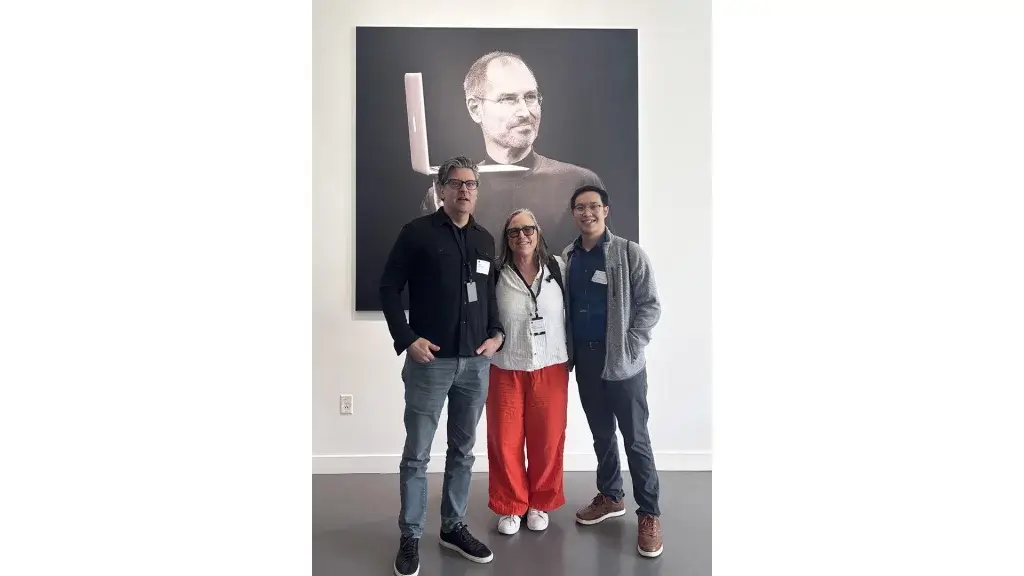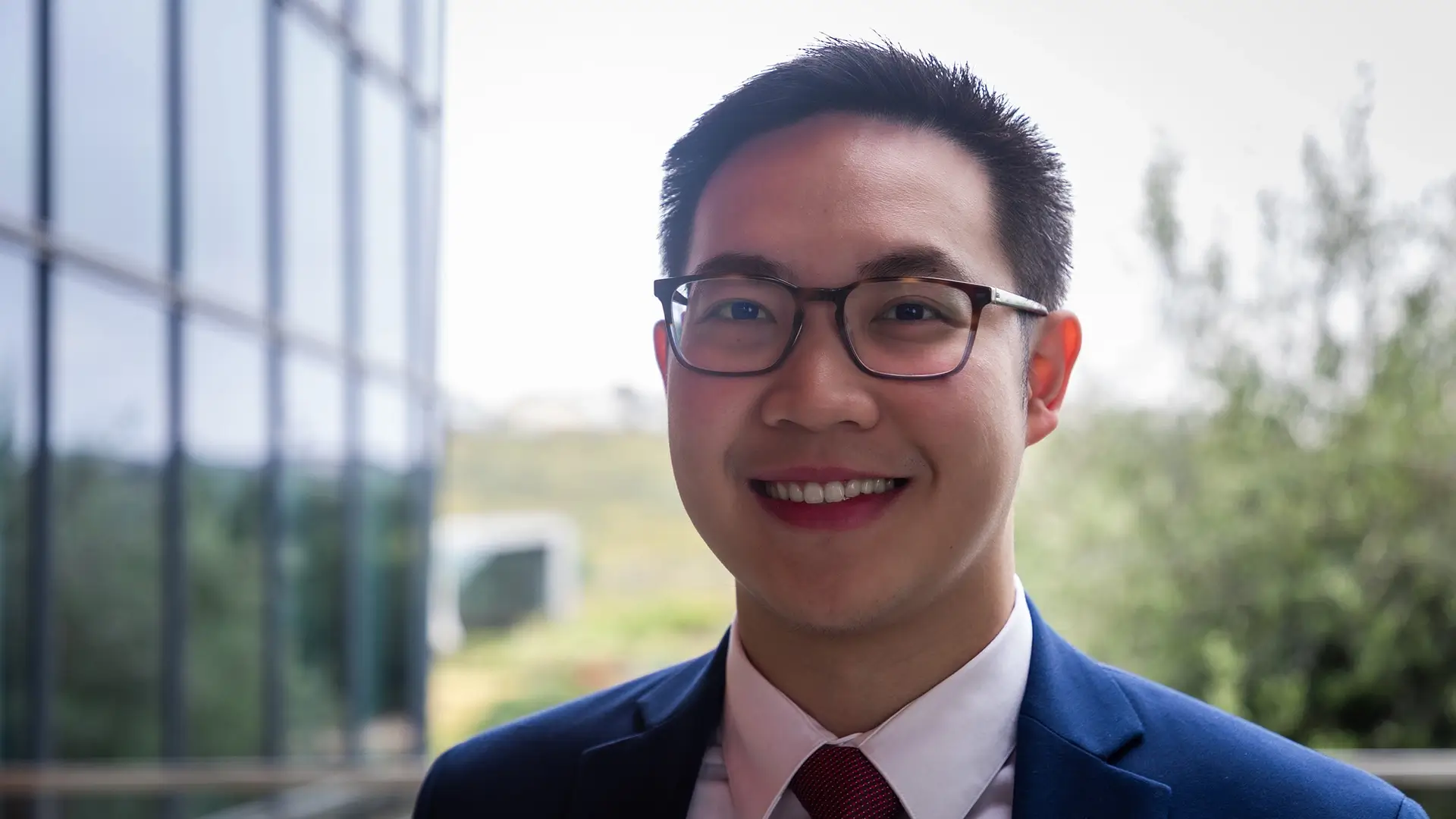Simon Trinh is a 4th year medical student at the Keck School of Medicine and is currently working at ICT as a Body Computing Fellow, USC Center for Body Computing. In this essay he demonstrates a deep interest in digital health research and in finding ways to use technology to improve healthcare access as he continues his studies towards a Doctor of Medicine (2026, anticipated) and Master of Public Health (2025, anticipated)
BYLINE: Simon Trinh, Body Computing Fellow, USC Center for Body Computing
Foundations in Technology and Curiosity
I grew up in the heart of Silicon Valley, surrounded by the explosion of new technology everywhere I looked. It comes as no surprise, then, that I have always loved tinkering with tech and have always been both fascinated by and wary of the potential of new technologies.
Before I met Dr. Leslie Saxon, Founder and Executive Director, USC Center for Body Computing, I wasn’t aware that working with cutting edge consumer technology was an option in my field, as medicine is typically focused on more iterative, tried and true approaches. Needless to say, I leapt at the opportunity to merge my personal interest in tech with clinical research.
Now a Trojan of 8 years, I originally came to the University of Southern California in 2017 to pursue a degree in Human Biology. Though I had fully committed to a career in medicine, I didn’t want to sever my ties with tech. To that end, with minors in Computer Programming and Health Care Studies, I charted a course that would allow me to keep one foot in both worlds.
That duality—between biology and bytes—has since become the core of my academic and professional identity.
Rediscovering Technology in Medicine
Like many in medicine, I initially saw the field as a bastion of tradition, rooted in routine and time-tested systems. Innovation in healthcare often comes slowly, and for good reason. But during my second year of medical school, I sent an email asking about research opportunities that changed everything.
When I first came to the USC Center for Body Computing (CBC) at the Institute for Creative Technologies (ICT), I was surprised and thrilled to discover a thriving research ecosystem at the cutting edge of consumer technology and medicine. It was the first time that I realized my fascination with devices, sensors, and software could be more than a hobby or side interest. In the right setting, it could become the basis for meaningful innovation in healthcare.
Walking into ICT and heading up to the 4th floor, where the USC Center for Body Computing is located, I saw gadgets and gizmos at every corner, showing me that there is still room in medicine for discovery and experimentation. I believe that the future of healthcare doesn’t have to be an upgrade or a replacement. It can be a synthesis – and in that synthesis, I found not only my research direction, but an exciting sense of purpose.
That encounter was the start of a short research elective at ICT in late 2022, and then to a full-year position as the Body Computing Fellow at CBC after completing my core clinical rotations. I stepped away from the hospital wards to pursue a Masters in Public Health (MPH) and to engage in research at CBC, all to get a bird’s-eye view of healthcare delivery and incorporate vastly different perspectives to help me help others in the best way possible.
It was a transformative decision—one that helped me see that medicine is not just what happens in the exam room, but what shapes that room to begin with.
The Research: Digital Health as a New Frontier
At ICT, I have had the chance to work on a series of ambitious digital health projects, all underpinned by a central question: How can we leverage emerging technology to make healthcare more accessible, efficient, and equitable?
My first major contribution was a collaborative paper with Dr. Saxon and Dr. Devin Skoll examining the evolving digital health landscape. This project laid the intellectual foundation for the work to come, allowing me to explore how consumer-grade technologies—long relegated to the periphery of medicine—might find robust clinical applications.
One of our most exciting studies involves validating app-based software that performs image-based, contactless vital sign and lab assessments using a smartphone camera. The software can scan a person’s face and produce estimates for blood pressure, oxygen saturation, hemoglobin, and A1c levels. We’ve tested this technology against conventional measures in the Keck Cardiology Clinic, and the results so far are interesting, taking us deep into the literature about the very essence of why and how we measure blood pressure. Its potential impact could drastically change healthcare delivery: remote patient monitoring, hypertension screening in underserved and rural communities, and real-time biometric feedback delivered straight to a patient’s device.
Another major research thrust has been our collaboration with the Keck GI/Liver Department on Metabolic-Associated Steatotic Liver Disease (MASLD). Using wearables and app-based feedback systems, we hope to intervene early in the disease process by promoting behaviour change and real-time health tracking. Similarly, our work with the Department of Surgery aims to address surgeon fatigue—an under-recognised but critical factor in patient outcomes—by using wearable tech to assess cognitive and physiological load over time.
A Broader View: Learning Beyond the Lab
My time at ICT has not been confined to the research bench. I’ve also participated in events like the USC Precision Health Retreat and the Apple Health Research Summit—gatherings that underscore how far technology has come in personalizing care. These experiences have highlighted the importance of interoperability, patient empowerment, partnerships with industry leaders, and the ethical frameworks necessary to guide innovation.

I was also honoured to be a guest lecturer at USC’s Iovine and Young Academy, where I taught about the evolution of devices supporting remote patient monitoring. That lecture traced a century’s worth of health technology advances—from clunky hospital-based systems to sleek, sensor-rich consumer devices—and examined the regulatory, commercial, and technical challenges in bringing those tools to market.
In addition, I’ve learned a lot from working in a team of extremely talented and intelligent people at CBC, each with expertise that I have been privileged to have access to. I have also learned much about mentorship, through both Dr. Saxon’s guidance as well as having the opportunity to pass on what knowledge and guidance I have to offer to the medical student underclassmen who I have had the pleasure of working with on some of these projects.
Why Technology Needs Medicine—and Vice Versa
One of the reasons I am passionate about digital health is because medicine often lags behind other industries in adopting new technology. That lag, though oftentimes justified by safety concerns, can also result in missed opportunities and patient frustration. Without thoughtful collaboration between tech developers, patients, and clinicians, we risk creating tools that are dazzling in design but impractical in real-world care.
True innovation requires humility and partnership. Developers must learn from clinicians about the nuances of care delivery. Clinicians must remain open to evolving tools that challenge long-standing workflows. And both must recognise that the patient is the ultimate stakeholder.
I believe that when technology and medicine come together with a shared purpose, we can design systems that are not only more efficient, but also more humane—systems that return agency to patients and alleviate burdens on providers.
Defining Success
For me, success means creating technologies that work seamlessly in real life—not just in controlled settings. It means giving patients more insight and control over their own health. It means empowering physicians to focus more on healing and less on paperwork.
And it means ensuring that the most advanced tools are not reserved for the privileged few, but made available to the communities that need them most.
Future Clinician Aspirations
As I prepare to return to clinical rotations and apply for residency, I feel more prepared than ever to take on the dual challenges of patient care and systemic innovation.
My time at CBC has given me not only technical skills but also a new lens through which to view medicine: as a dynamic ecosystem, one that is shaped not just by biology and pathology, but by infrastructure, policy, and design.
At the end of the day, the patient always comes first, and to be able to hear their stories and practice medicine is the greatest honor I can ask for. But both inside and outside the exam room, I hope to one day be a clinician who codes, who questions systems, and who builds bridges between disciplines. I hope to be the kind of doctor who listens—to both heartbeats and data streams—and who knows when a problem needs a stethoscope, and when it needs a software update.
Publications
Saxon LA, Bose R, Miller JC, Trinh S. 52 – Personal Cardiac Monitoring. In: Zipes and Jalife’s Cardiac Electrophysiology. Ninth Edition. Elsevier Inc. [In Editing Phase]
Trinh S, Skoll D, Saxon LA. Health Care 2025: How Consumer Facing Devices Change Health Management and Delivery. J Med Internet Res 2025;27:e60766.
Zou J, Willem de Gee J, Mridha Zakir, Trinh S, Erskine A, Jing M, Yao J, Walker S, Li Y, McGinley M, Hires SA. Goal-directed motor actions drive acetylcholine dynamics in sensory cortex. 2024. doi:10.7554/elife.96931.1
Jing M, Li Y, Zeng J, Huang P, Skirzewski M, Kljakic O, Peng W, Qian T, Tan K, Zou J, Trinh S, Wu R, Zhang S, Pan S, Hires SA, Xu M, Li H, Saksida L, Prado VF, Bussey T, Prado MAM, Chen L, Cheng H, Li Y. An optimized acetylcholine sensor for monitoring in vivo cholinergic activity. Nature Methods. 2020;17(11):1139-1146. doi:10.1038/s41592-020-0953-2
Trinh, Simon. “Pick a Card, Any Card: An Examination of Electronic Medical Records and a Proposition of an Alternative Record Storage System.” USC Scribe, 23 Apr. 2018, scribe.usc.edu/pick-a-card-any-card-an-examination-of-electronic-medical-records-and-a-proposition-of-an-alternative-record-storage-system/
Presentations
Trinh, Simon. “Investigation of Neuromodulator Release Dynamics, Validation of GRAB sensors, and Relationship with Behavior in Mice Models” BISC 494 Honors Thesis, presented 20 Nov. 2020.
Zou J, Feng J, Yao J, Trinh S, Kim J, Li Y, Hires S. Monitoring norepinephrine dynamics in barrel cortex during whisker-guided behavior. Presented at: BRAIN Initiative Investigators Meeting, Washington DC, 2019 April 11-13.
//
